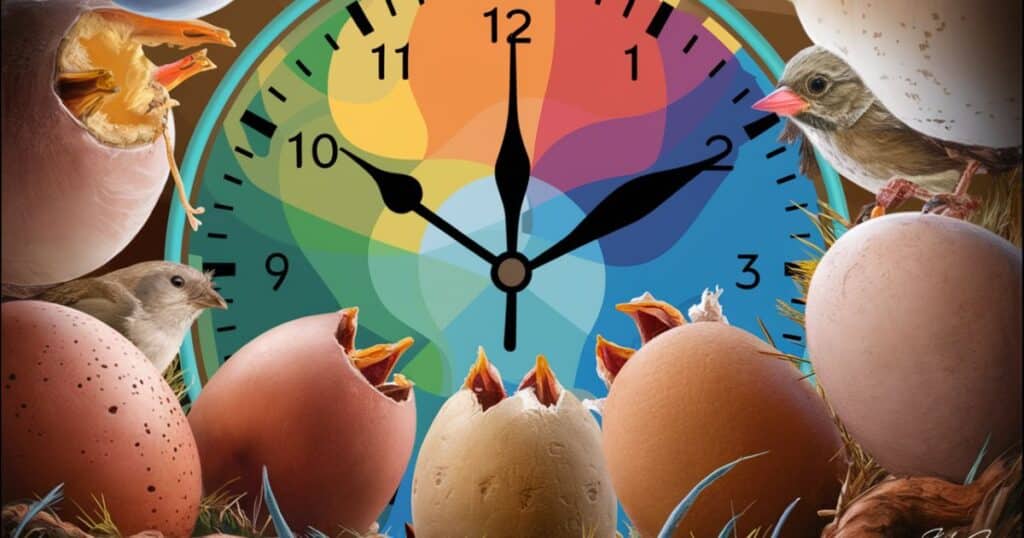Picture this: a crisp spring morning, the air filled with melodious chirps. You peek into a nearby bird nesting spot and catch a glimpse of a tiny beak poking through an eggshell. It’s a magical moment in the world of avian reproduction, but have you ever wondered how long that little bird offspring waited to make its grand entrance?
From the diminutive hummingbird to the towering ostrich, every one of the myriad bird varieties has its own unique egg hatching time. In this comprehensive guide, we’ll embark on a fascinating journey through the diverse world of avian kinds, unraveling the mysteries of their incubation timeline. We’ll explore how long it takes for different ornithological species to hatch, dive into the intricacies of nest incubation, and discover how parental birds play a pivotal role in their chicks’ journey from egg to flight.
Whether you’re a backyard birdwatcher, an aspiring ornithologist, or simply someone who marvels at the wonders of nature, this guide is your ticket to understanding the captivating bird life cycle. So, grab your binoculars, and let’s dive into the world of avian eggs, eggshells, and the miracle of hatching!
The Captivating Journey from Egg to Chick
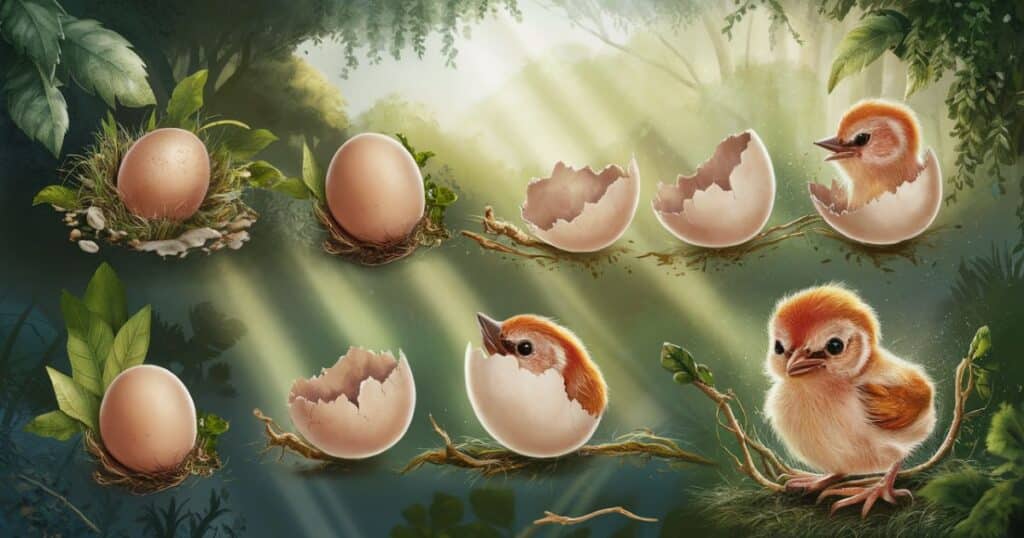
The Dance of Life: Egg-laying and Incubation
Every bird’s life begins with an egg, a marvel of nature that houses everything a chick needs to develop. But before we delve into egg laying and incubation, let’s understand why birds lay eggs in the first place.
- Protection: Eggs provide a safe, portable environment for the developing bird embryo.
- Nutrition: The yolk is a chick’s built-in lunch box, packed with proteins and fats.
- Diversity: Bird eggs come in a rainbow of colors, sizes, and shapes. For instance, the ostrich egg is the largest at 3 pounds, while the bee hummingbird’s egg weighs less than a paperclip.
MORE POST: Is A Bird A Mammal? Exploring The Avian Classification
| Bird Species | Egg Weight | Egg Color |
| Ostrich | 3 lbs (1.4 kg) | Creamy white |
| Hummingbird (Bee) | 0.02 oz (0.5 g) | White |
| Robin | 0.2 oz (5.7 g) | Sky blue |
| Bald Eagle | 4.1 oz (116 g) | Dull white |
Now, let’s explore the avian reproduction process:
- Finding the Perfect Spot: Birds are meticulous when choosing their avian breeding site. Some, like bald eagles, return to the same massive nest year after year. Others, like the tiny hummingbird, craft a new cup-shaped nest each season.
- Nest Building: This is a labor of love. Materials vary widely:
- Mud: Robins and barn swallows
- Twigs and Branches: Eagles and herons
- Spider Silk: Hummingbirds use this for nest elasticity
- Egg Laying: Most birds lay one egg per day until the clutch is complete. The number varies:
- 1-2 eggs: Hummingbirds, eagles
- 4-6 eggs: Robins, chickadees
- 12-14 eggs: Mallard ducks
- Incubation: This is where the magic happens. Avian parents carefully regulate the temperature and humidity of their eggs. Most birds have a brood patch, a featherless area of skin that transfers heat directly to the eggs.
“The brood patch is nature’s heating pad, a testament to the incredible adaptations in avian caregiving.” –
Dr. Jane Goodall, Prim
Cracking the Code: How Long Does It Take for Bird Eggs to Hatch?
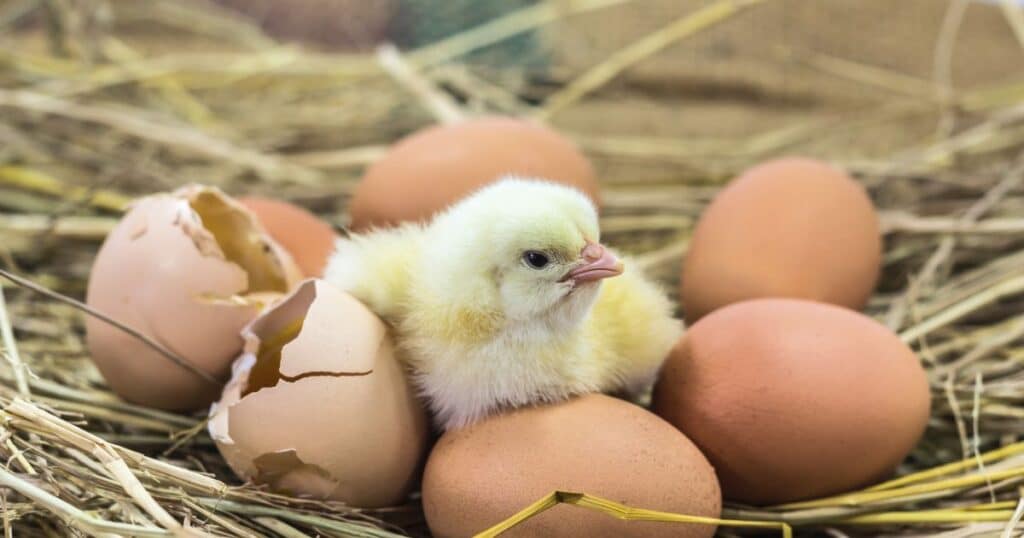
Now we arrive at our central question: How long does it take to hatch bird eggs? The answer varies greatly depending on several factors:
- Egg Size: Generally, larger eggs take longer to hatch. It’s all about the amount of development needed.
- Species: Each bird has its own genetically-determined incubation period.
- Climate: Warmer temperatures can slightly speed up embryo development.
Here’s a general timeline:
- Most birds: 10-30 days
- Small songbirds (passerines): 10-14 days
- Larger birds (raptors, waterfowl): 3-7 weeks
Let’s dive into some specific bird varieties and their hatching timeframes:
| Bird Group | Species | Incubation Period |
| Passerines (Perching Birds) | Robin, Sparrow | 12-14 days |
| Waterfowl (Water Birds) | Mallard Duck | 26-28 days |
| Raptors | Bald Eagle | 34-36 days |
| Woodpeckers (Avian Carpenters) | Downy Woodpecker | 12 days |
| Parrots | African Grey | 28 days |
Case Study: The Patient Penguin Emperor penguins have one of the longest incubation periods at around 62-64 days. The male penguins endure the harsh Antarctic winter, balancing the egg on their feet and covering it with a flap of skin called the brood pouch. They fast for up to 115 days, losing half their body weight to ensure their chick’s survival. Talk about dedicated avian guardians!
The Hatching Process: A Chick’s Triumphant Debut
After the long wait, it’s time for the grand entrance. The hatching process is a feat of strength and determination for the tiny chick:
- Internal Pipping (1-2 days before hatching): The chick uses its egg tooth (a temporary bump on the beak) to break into the air cell within the egg.
- External Pipping (24-48 hours before hatching): The chick starts to crack the eggshell. You might hear faint peeps.
- Zipping (Final hours): The chick turns inside the egg, cracking it in a circular pattern (like unzipping a jacket).
- Emergence: With a final push, the wet chick tumbles out. Within hours, it’s dry and fluffy.
“Watching a chick hatch is like witnessing a magic trick. One moment it’s an egg, the next, a brave new life.” –
Sir David Attenborough, Naturalist
Bird Egg Hatching Times: A Species-by-Species Breakdown
Speed Champions: Birds with the Quickest Hatching Times
- Hummingbirds (Avian Singers): These tiny marvels have some of the fastest incubation timeframes.
- Ruby-throated Hummingbird: 14-16 days
- Fun Fact: Their eggs are smaller than jelly beans.
- Passerines (Perching Birds): These include your backyard favorites.
- House Sparrow: 10-13 days
- American Robin: 12-14 days
- Northern Cardinal: 11-13 days
- Tree-dwelling Birds: Some of these avian carpenters are quick hatchers too.
- Downy Woodpecker: 12 days
- Black-capped Chickadee: 11-13 days
Patience is a Virtue: Birds with the Longest Incubation Periods
- Ostrich: The heavyweight champion of eggs.
- Incubation Period: 42-46 days
- Fact: One ostrich egg equals about 24 chicken eggs.
- Albatross and Emperor Penguin: Ocean voyagers with epic parental care.
- Incubation Period: Around 60-65 days
- Case Study: Wandering Albatross pairs take turns incubating, with one foraging at sea while the other keeps the egg warm.
- Birds of Prey: Patience pays off for these majestic hunters.
- Bald Eagle: 34-36 days
- Great Horned Owl: 30-37 days
Other Fascinating Feathered Friends and Their Hatching Timelines
- Farm and Backyard Birds:
- Chicken: 21 days (perfect for incubating domestic birds)
- Mallard Duck: 26-28 days
- Parrots: These intelligent birds take their time.
- African Grey: 28 days
- Macaw: 24-28 days
- Endangered Species:
- California Condor: 53-60 days (every egg is precious)
“In bird time, a month can feel like a lifetime or a blink of an eye. It all depends on the species and the resilience of its chicks.” –
Julie Zickefoose, Artist and Naturalist
The Parental Partners: How Mom and Dad Birds Help
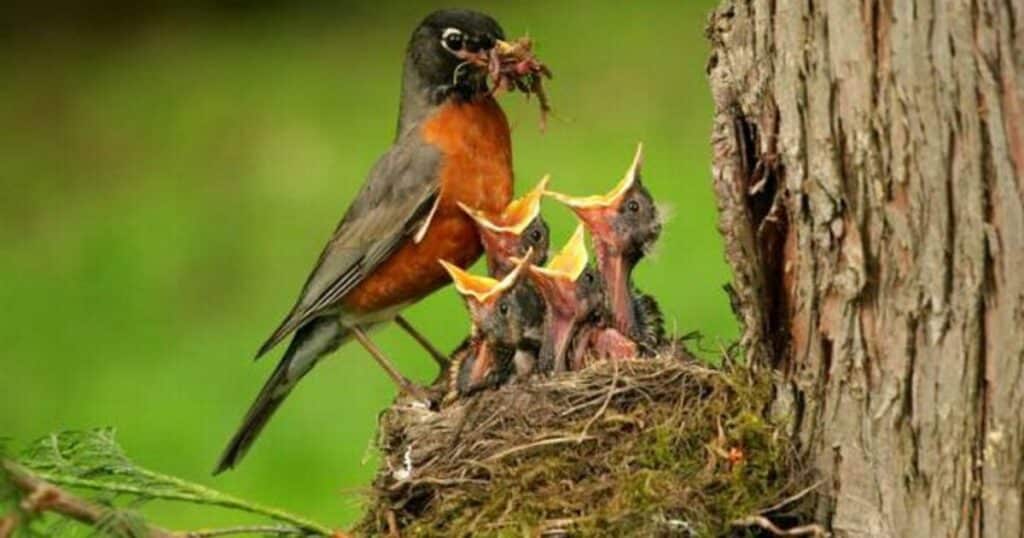
Avian parenting is a marvel of nature. Both mother and father birds play crucial roles in ensuring their offspring’s survival.
Nest Building: A Labor of Love
- Finding the Spot: Birds are picky about their avian homes. They consider:
- Safety from predators
- Proximity to food and water
- Climate (shade, wind protection)
- Construction: Birds are master architects. Their nesting habits vary:
- Cup Nests (Robins, Yellow Warblers): Made of grass, mud, and even spider silk.
- Platform Nests (Herons, Eagles): Large, sturdy structures in trees or cliffs.
- Cavity Nests (Woodpeckers, Bluebirds): In tree holes or nest boxes.
- Ground Nests (Killdeer, Nightjars): Hidden in grass or on bare ground.
“Each nest is a bird’s personal statement, a little home that speaks volumes about its builder.” –
Bernd Heinrich, Biologist
- Who Builds?: It varies by species.
- In many songbirds, the female builds.
- In some species like the bald eagle, both parents contribute.
- Male bowerbirds create elaborate “bowers” to attract mates.
Incubation: Keeping the Eggs “Just Right”
Incubation is all about temperature control. Most bird eggs need to be kept around 100°F (37.8°C). Here’s how avian guardians manage:
- Brood Patches: These are bare, vascularized skin areas that transfer heat directly to eggs.
- Egg Turning: Parents turn eggs several times a day to ensure even heating and prevent the embryo from sticking.
- Who Incubates?: It varies:
- Females Only: Most songbirds, hummingbirds
- Males Only: Emperor penguins, phalaropes
- Both Parents: Eagles, albatrosses, many seabirds
Case Study: The Devoted Dad – Emperor Penguin While the female is at sea replenishing her strength, the male emperor penguin endures Antarctic blizzards, keeping the egg warm on his feet. He may lose up to 45% of his body weight during this 2-month vigil. When the chick hatches, it’s the female’s turn to take over, allowing the exhausted dad to finally feed.
Post-Hatch Care: From Helpless to Hopeful
Once hatched, chicks fall into two categories:
- Altricial: Born naked, blind, and helpless. These include:
- Most passerines (robins, sparrows)
- Woodpeckers
- Birds of prey
- Precocial: Born with down feathers, open eyes, and able to walk.
- Waterfowl (ducks, geese)
- Shorebirds (killdeer, plovers)
- Game birds (quail, pheasants)
| Chick Type | Examples | First Days |
| Altricial | Robin, Sparrow | Fed every 15-20 mins, eyes open in 3-12 days |
| Precocial | Duckling, Quail | Can swim/walk within hours, self-feed under parental guidance |
DIY Bird Parents: Incubating Domestic Birds
For those raising backyard birds like chickens or quail, understanding incubation is key:
- Natural Incubation: A broody hen can hatch eggs naturally.
- Pros: Natural care, hen raises chicks
- Cons: Not all hens go broody
- Artificial Incubation: Using an incubator.
- Pros: Control over conditions, hatch anytime
- Cons: Requires careful monitoring
| Species | Incubation Period | Temp (°F) | Humidity (%) |
| Chicken | 21 days | 99.5-100 | 40-50 (rises to 70% in last 3 days) |
| Duck | 28 days | 99.5 | 55 (rises to 75% in last 3 days) |
| Quail | 17-18 days | 99.5 | 45 (rises to 65% in last 3 days) |
“Whether by hen or by machine, the miracle of life unfolds the same. It’s all about warmth, moisture, and a little patience.” –
Andy Cawthray, Chicken Expert
Beyond Hatching: The First Days of a Bird’s Life
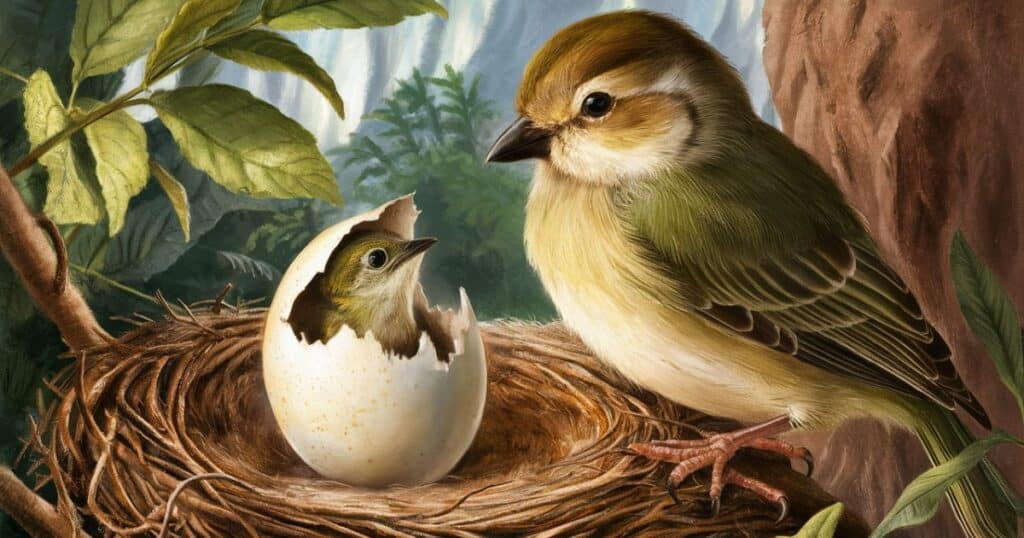
Nestling Stage: Growing Strong
After the drama of hatching, chicks enter the nestling stage. This is a period of rapid growth:
- Nestling Duration: Typically 8-12 days for small passerines.
- Exceptions: Kiwis are precocial and leave the nest in just 2-3 days!
- Growth: Some chicks double their weight daily. Imagine if human babies did that.
Feeding Frenzy: Parents work tirelessly.
- Small Birds: Fed every 15-20 minutes from dawn to dusk.
- Diet: Insects (high protein) for most songbirds; fish for birds like herons.
Learning to Fly: From Fledgling to Freedom
The journey from helpless hatchling to soaring adult is rapid:
- Fledging: Leaving the nest.
- Small Backyard Birds (robins, sparrows): 10-14 days
- Larger Birds (eagles, owls): 6-12 weeks
- First Flights: Often within a month of hatching.
- Training: Short hops to branches before full flight.
- Development: Flight muscles strengthen through exercise.
| Bird Species | Fledge Age | First Full Flight |
| American Robin | 13-16 days | 2-3 weeks |
| Bald Eagle | 10-12 weeks | 3-4 months |
| Barn Owl | 7-8 weeks | 3 months |
| Hummingbird | 18-28 days | 3-4 weeks |
“A bird’s first flight is a leap of faith. It’s the moment they truly become what they were born to be.” –
Sy Montgomery, Naturalist
Conclusion: The Marvels of Bird Life
In this journey through avian life cycles, we’ve discovered that the question “How long does it take to hatch bird eggs?” has no single answer. It’s a tapestry woven from the threads of:
- Species Diversity: From the 10-day incubation of a house sparrow to the 2-month wait of an albatross.
- Parental Dedication: The tireless efforts of mother and father birds in nest-building, incubation, and rearing.
- Nature’s Ingenuity: The perfect design of eggs, the marvel of brood patches, the resilience of chicks.
ALSO READ THIS POST: Craft The Ultimate Opium Bird Costume: Your Step-By-Step Guide To Soaring In Style
Key Takeaways
- Incubation Periods vary wildly: 10 days to 2 months.
- Parental care is crucial, from nest construction to post-hatch feeding.
- Every egg holds a miracle of avian reproduction.
Celebrating Our Feathered Friends
As we conclude our exploration of egg hatching times and nesting habits, let’s remember that every bird you see—whether a humble sparrow or a majestic eagle—has undergone this incredible journey. Here’s how you can appreciate and support our avian population:
- Avian Observation: Become a backyard bird watcher.
- Set up feeders and nesting boxes (great for bluebirds and chickadees).
- Keep a journal of bird varieties you spot.
- Remember, observation without disturbance is key.
- Creating Bird-Friendly Spaces:
- Plant native trees and shrubs for nesting places.
- Avoid pesticides that can harm birds and their insect food.
- Leave some areas “messy”—birds love brush piles and unmown grass.
“In every backyard, there’s potential for a mini bird sanctuary. A single nest box can mean the difference between survival and loss for a clutch of bluebirds.” –
David Allen Sibley, Ornithologist and Illustrator
- Supporting Conservation:
- Join local bird enthusiast groups or national organizations:
- Audubon Society: Protects birds and their habitats.
- Cornell Lab of Ornithology: Leading bird research center.
- Participate in citizen science projects like the Great Backyard Bird Count.
- Join local bird enthusiast groups or national organizations:
- Spread the Word:
- Share your bird stories on social media.
- Educate friends about the wonders of avian life cycles.
- Gift bird-related books to youngsters—nurture the next generation of ornithologists.
Fun Facts to Share:
- The Arctic tern travels up to 44,000 miles annually, seeing more daylight than any other creature.
- The peregrine falcon is the fastest animal, diving at speeds up to 240 mph.
- Some birds, like the Australian brush-turkey, don’t incubate their eggs at all. Males build huge mounds of vegetation that generate heat as they decompose.
H3: A Call to Cherish and Protect
In our fast-paced world, the hatching of a bird egg is a reminder to slow down and marvel at nature’s intricacies. From the first egg laying to the triumphant fledgling time, each phase is a testament to life’s resilience.
As you go about your day, remember:
- That robin on your lawn? Its parents incubated it for nearly two weeks.
- The eagle soaring overhead? It spent over a month developing in its egg.
- And that hummingbird darting among your flowers? Its mom built a nest the size of a walnut shell.
Every bird has a story, starting with the age-old question: “How long does it take to hatch bird eggs?” The answer, as we’ve seen, is as varied as the avian species themselves. But one thing is constant: the wonder of it all.
So, the next time you hear a chirp or see a feather, remember you’re witnessing the result of an incredible journey. Let’s do our part to ensure these avian wonders continue to grace our skies, forests, and backyards for generations to come.
“In the end, we will conserve only what we love; we will love only what we understand; and we will understand only what we are taught.”
Baba Dioum, Conservationist

Davin Connor is an experienced author with 3 years in pets writing. Known for concise, informative content, he shares expertise on pet care, behavior, and health through his engaging articles.
